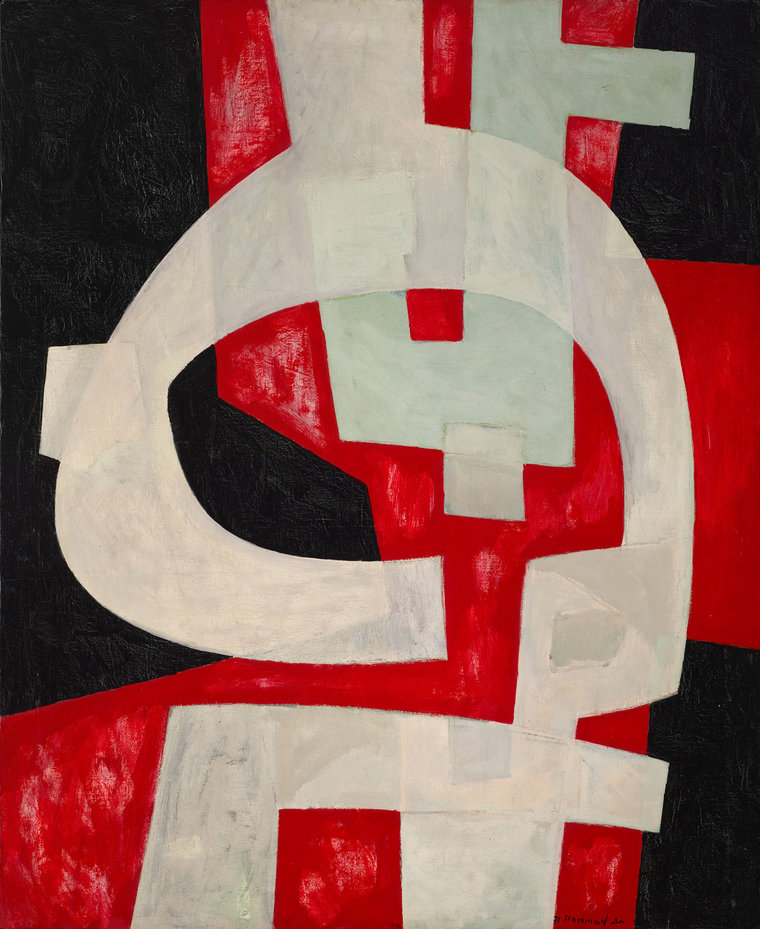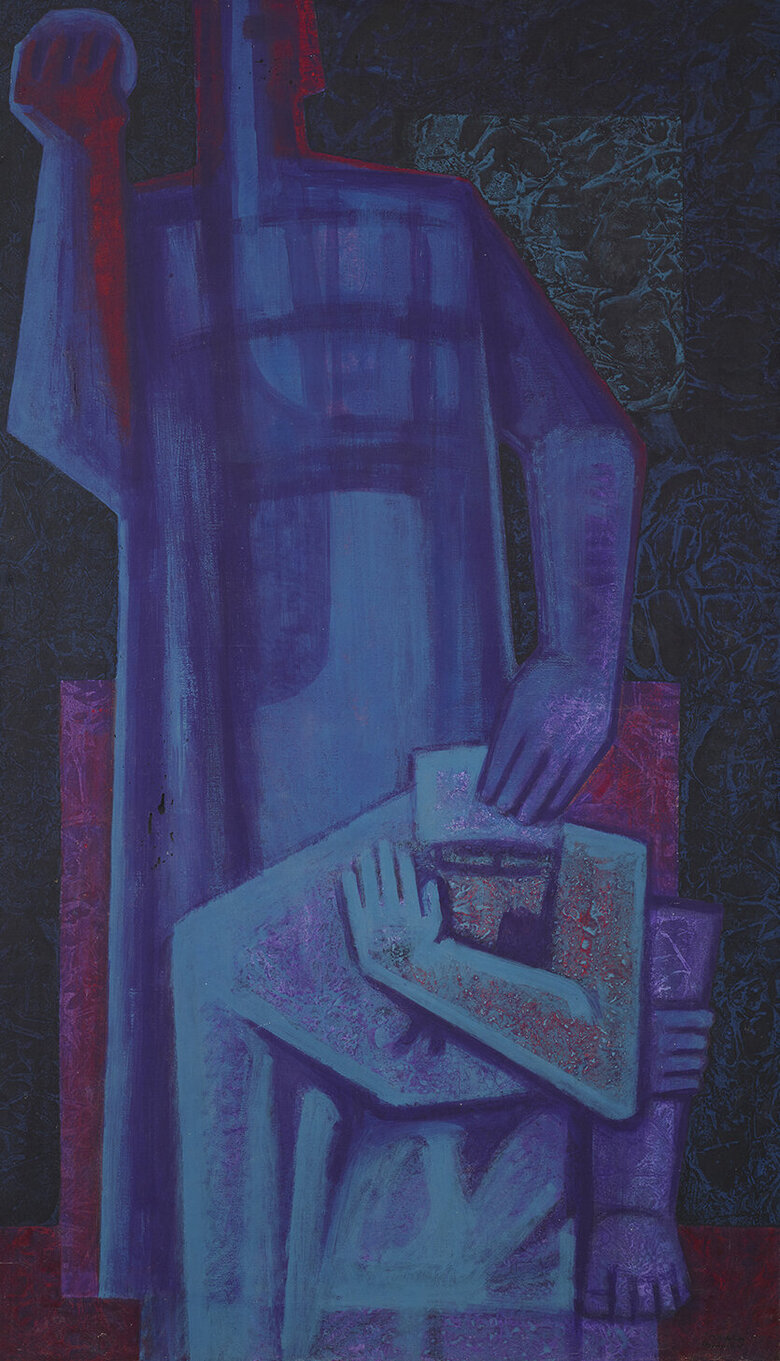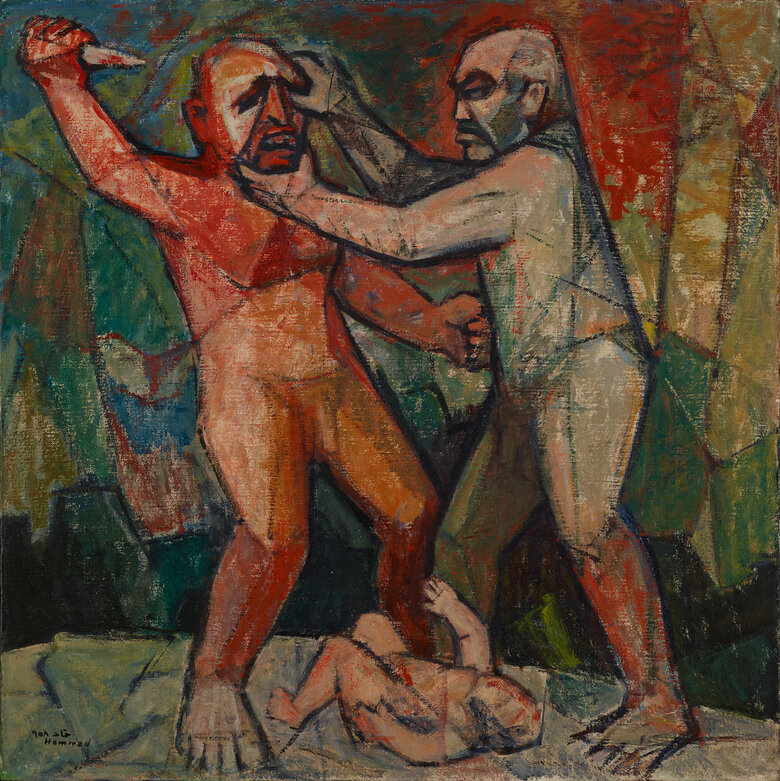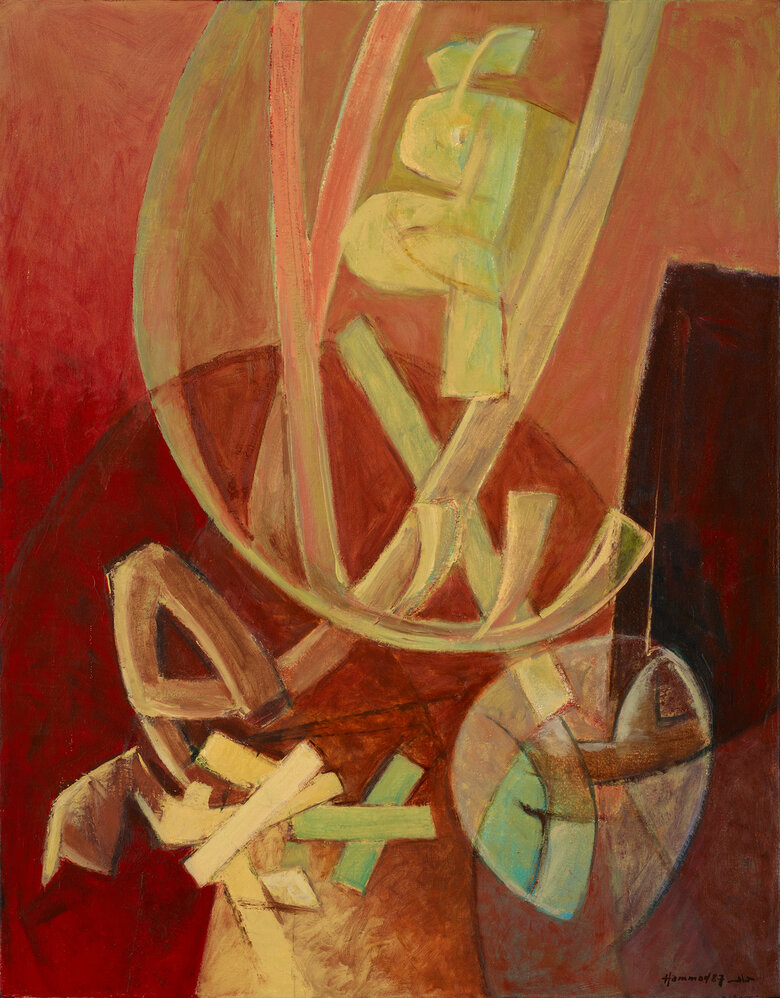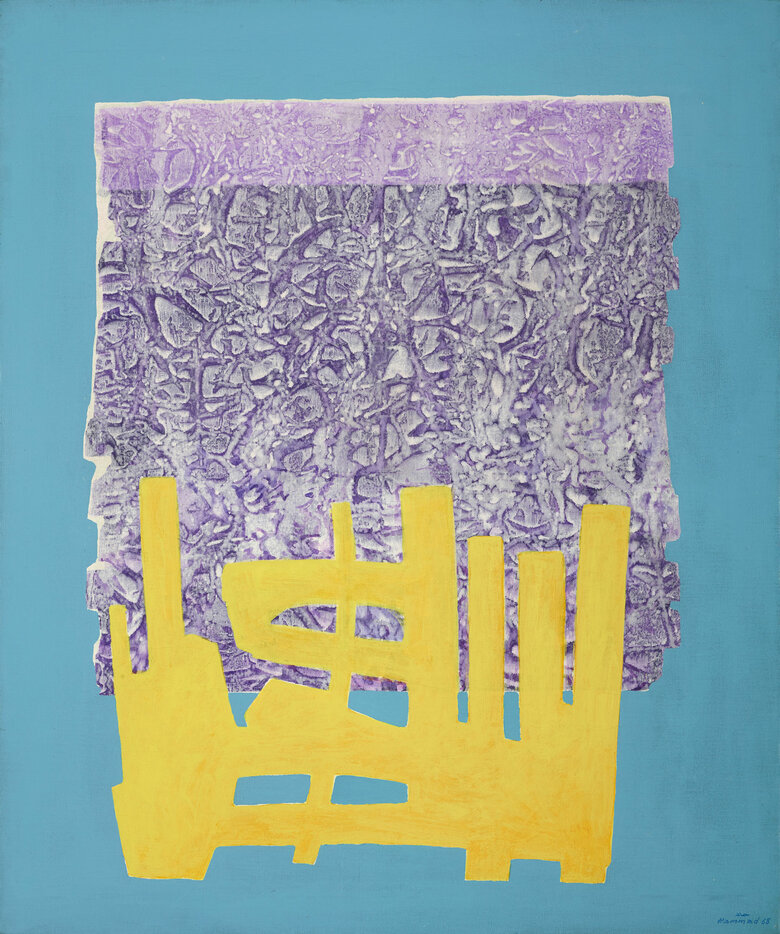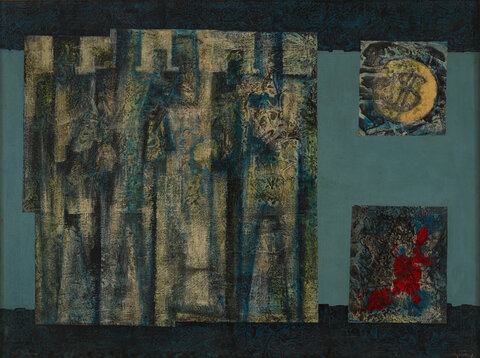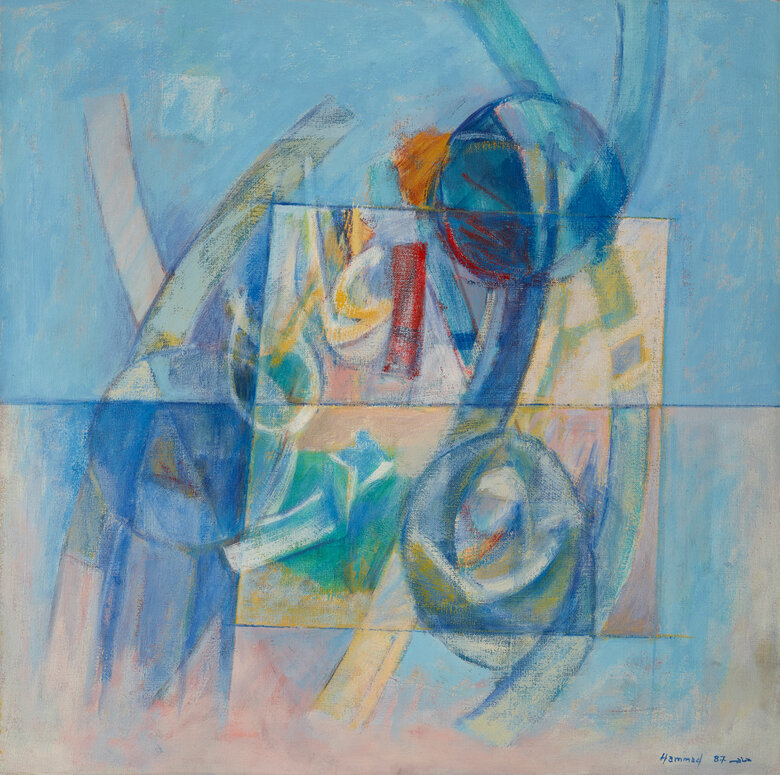Untitled, 1970, by Mahmoud Hammad, depicts large superimposed flat shapes inspired by Arabic calligraphy, painted in a stark tri-chromatic black, red, and white palette. Against a foundational black background applied with oil-paint on canvas rests a superimposed zigzag-like geometrical shape with angular edges, painted red. It breaks the uniformity of the black background and creates an intriguing visual pathway.
Onto the red zigzag-like shape, Hammad added one central curvilinear and two angular flat shapes painted white; all reminiscent of Arabic calligraphy. The gradient white shapes mimic the Arabic letters: ب(Ba), م(Meem), ل (La),and ف(Fe), they are positioned across the central axis of the painting’s vertical composition. The white paint exhibits a unique sheer quality, allowing the red and black layers beneath to subtly show through. This interaction between the shapes’ overlapping tonalities results in a dynamic color gradient, with the white paint transitioning into grayish-white, where it overlaps with the red and black underlayers.
In Untitled, 1970, Hammad masterfully manipulated the Arabic letterforms as the primary visual motifs that rhythmically energize the canvas. The engagement with Arabic calligraphy, a hallmark of Islamic art, reflects the broader efforts of contemporary Arab artists to carve out a unique artistic identity. Adopting the 'Abstract Calligraphy' style, a term coined by art historian Wijdan Ali, Hammad balances distorted geometric letters and the spiritual depth inherent in the Islamic artistic tradition, e.g., calligraphy. This concept of abstract calligraphy in Hammad's art refers to his distinctive approach to using Arabic letterforms: they serve not mainly for their literal significance but as visual and symbolic elements that enhance his work's overall aesthetic and thematic composition.
Mahmoud Hammad played a pivotal role in pioneering abstraction and the assimilation of Arabic letterforms. His body of work is marked by a unique series that integrates Arabic letters as core elements, systematically positioned in a modernist style, generating abstract compositions rich in rhythm. Hammad's inventive methodologies and artistic development identified him as part of the Hurufiyah Art Movement, a modern art movement spearheaded by Syrian-Iraqi artist Madiha Umar in the 1950s. Umar was the first to incorporate Arabic calligraphy with modern abstract art. Artists of the Hurufiyah Art Movement adopted the Arabic letter as a point of departure and manipulated the letters’ calligraphic shapes into abstracted shapes devoid of any legible meaning.
Hammad's strategic arrangement and transformation of the Arabic calligraphic forms in Untitled, 1970, imbues the artwork with a dynamic sense of balance and rhythm. This indicates the artist's careful attention to detail and nuanced manipulation of color and transparency. The red zigzag-like shape, piercing through the uniformity of the scuffed black backdrop, guides the viewer's gaze across the canvas, while its angular, repetitive pattern initiates rhythmic movement.
Hammad's Untitled, 1970, serves as an eloquent exploration of cultural identity, showcasing the powerful confluence of historical Arabic calligraphical tradition and contemporary artistic practice, epitomizing the ethos of the Hurufiyya movement. This masterful representation of abstract calligraphy underscores Hammad's significant influence on modern Syrian and Arab art, presenting a compelling exploration of cultural identity through the lens of abstract calligraphy.
Signed in English and Arabic, and dated "70", on the lower left front

